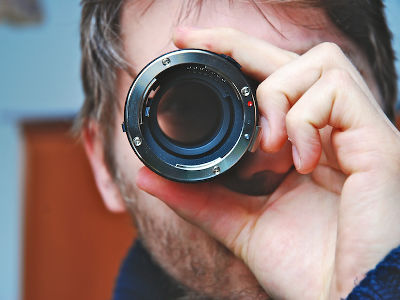It turns out that the size of the pupil changes not only with brightness but also with 'the number of objects perceived'

The pupil responds spontaneously to perceived numerosity | Nature Communications
https://www.nature.com/articles/s41467-021-26261-4
More than light detectors: the magic of your eyes' pupils --The University of Sydney
https://www.sydney.edu.au/news-opinion/news/2021/10/25/more-than-light-detectors--the-magic-of-your-eyes--pupils.html
The Pupil in Your Eye Can Perceive Numerical Information, Not Just Light
https://www.sciencealert.com/pupil-size-changes-depending-on-how-many-objects-we-re-looking-at
The ability to 'count' may seem like a fairly advanced intellectual act, but besides humans, monkeys , crows , bees, etc. also have the ability to recognize numbers, and newborn humans. It is believed that babies also have the concept of numbers.
'When we look around, we spontaneously perceive the shape, size, movement, and color of what we see. Similarly, we are in front of us,' said David Barr, a professor of psychology at the University of Sydney. It also voluntarily recognizes the number of objects in it. This ability, which is shared with most other animals, is the basis of evolution. This ability allows the number of apples on the tree and the enemies attacking. You can quickly recognize important numbers, such as the number of. '
Since it is so important that the recognition of numbers is spontaneously perceived, Barr et al.'S research team said, 'The ability to spontaneously recognize the number of objects in the primitive physiological response of human beings. There may be evidence of this. ' Therefore, the research team decided to conduct an experiment, thinking that the size of the pupil, which automatically contracts and expands in response to light, may change depending on the number of perceived numbers.

The research team showed 16 subjects an image with 18 or 24 dots, followed by an image of the dots connected by a line. The number of points in the two images has not changed, but there seems to be an illusion that the number of points is small when the points are connected by a line and connected in a dumbbell shape.
Subjects were not tasked with viewing the images, they were only required to passively view the images. The research team then asked the subjects to determine 'whether the first image or the second image had more points drawn', and the points perceived in the second image. It was confirmed that the number was 20% or more on average less than the first one.
Furthermore, as a result of analyzing how the size of the pupil changed in 6 seconds when the image was shown, even though the number of points did not actually change between the first and second images, the illusion was that ' It was found that the pupil size changes as the 'perception of the number of points' changes. The research team says that the diameter of the pupil expanded when the number of perceived points was high and contracted when the number of points was low.

Dr. Eliza Castardi of the University of Florence, who participated in the study, said, 'This result shows that numerical information is essentially related to perception. This may have important and practical implications. Commented. For example, the ability to recognize numbers (PDF file) is impaired by a learning disability called dyscalculia, but in many cases you will not realize that you have a disability until you are old enough. However, by developing a test that applies this experiment to examine the contraction and enlargement of the pupil by showing an image, it is possible to determine the presence or absence of dyscalculia at an early stage even for young children who have not yet learned math. It is said that there is sex.
Related Posts:
in Science, Posted by log1h_ik







